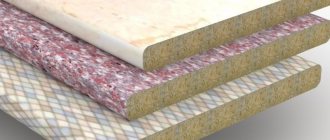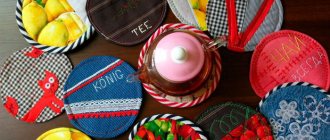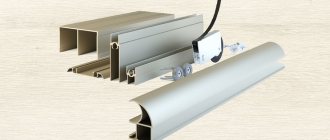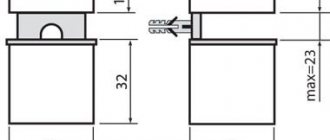Every meter in the kitchen should be used wisely. They think about the functional placement of the headset and additional drawers first of all. Utensils, dishes, cereals and spices are arranged so that it is convenient for all family members to use them.
Housewives often don’t think about where to store small jars. But spice racks in the kitchen are a great way to keep all the seasonings in one place. The necessary jar of pepper will always be at hand, and turmeric will not get lost in the far corner of the wall drawer.
How to store spices
It is optimal to store spices according to their expiration date. The fresher the herbs and seeds, the more aromatic they are and contain more nutrients. It is best to take spices not in mixtures, but in their natural form - dried leaves, dried seeds, natural cinnamon bark, vanilla pods, etc. To enhance the taste, adherents of Indian cuisine roast spices in a frying pan, having previously crushed the ingredients of the seasoning.
Grinding spices is also a matter of individual choice. Some people use ground spices right away, some use a mortar, some use an electric coffee grinder. As for herbs, not many people will be able to notice the difference between freshly ground and ground a week ago. Spices like nutmeg actually work much better when grated a little at a time for each dish. Dried and fresh herbs differ in taste; many housewives store chopped fresh herbs in the freezer. The choice is yours - it's your kitchen.
The only thing that lovers of fancy dishes and ordinary cooking will agree on is that spices must be stored in a dark, dry place, preferably tightly closed. Of course, jars made of glass or metal are best, but a battery of jars does not always fit in the kitchen. If a package with a spice does not have time to open, there is nothing left there - such spices can be stored in their original bags in tightly closed boxes. Flavorful herbs and spices that you usually don't use much can be stored in jars, but do not forget about the storage time.
Or maybe a stand?
The stand is an ideal option for lovers of classic kitchen interiors. You don't have to hang anything on the wall or on the outside of the cabinet. Such a stand can comfortably “settle” on the countertop, taking up a minimum of space and ensuring maximum comfort in the culinary process.
The stand is quite convenient, since it does not need to be hung anywhere.
Most often, it is made of natural wood. This design not only makes the design convenient, but also stylishly complements almost any interior design.
Usually the stand is made of natural wood.
By the way, you can also place a spice rack on a windowsill or in a closet. The shapes of the structures are very diverse: from the classic rectangular, to round, or in the form of a pyramid.
The stand can also be placed in a closet.
DIY spice racks
A video selection of master classes in which masters show how to make a spice rack with your own hands.
Cool spice rack
Roman Forest showed how he makes the simplest version of a spice rack with his own hands. He used 5 elm boards. Tools: combination machine, surface planer, belt sander, router, eccentric sander.
DIY Vintage Tabletop Spice Rack
Oleg Kidanov, in a video on his channel, showed how he made a shelf for six 200-gram spice jars:
Wooden box shelf
In essence, this is a product made from thin narrow boards; the box will first have to be disassembled, all the nails removed, and the boards thoroughly sanded. A wooden pallet will also work, as long as the width of the planks is slightly larger than the diameter of the jars. The author of the idea used 6 long boards and 2 pairs of short ones, wood glue and nails.
- Between 2 long boards I installed short ones, approximately equal to double the height of the jars. Glued it together and nailed it down with small nails. The long boards are the bottoms of the top and bottom shelves, the short ones are the sides of the bottom.
- I attached 2 more long boards to the side edges of the lower long board and the lower part of the sidewalls from the front and rear, creating the sides of the lower shelf.
- In the same way, I attached 2 boards to the bottom of the top shelf and inserted the side panels between them.
- I painted it, decorated the façade with decoupage and varnished it.
The shelf is light, so it hangs on a cord. If you wish, you can take the idea as a basis and implement your own version, improving the design and assembly method. For example, make the sidewalls solid, and install the sides and bottoms between them, so it’s neater.
Tabletop spice racks
Buffet shelf
Author: Victoria Petrova
Tabletop spice rack from SpiceLuxe
One of the options is in a tabletop version, which is used for completing spice sets.
Rotating spice racks
The photo of this shelf has long been circulated on the Internet, but I can’t help but add it here, since it is very original. The original source is difficult to find due to the many reposts. Photo taken here: imgur.com/SAscjY9
Another option is with rotation. The source is also not known, but it will be indicated here when it comes across it.
Interesting new products in the world of kitchen utensils
Such a module will not take up much space, and its capacity will satisfy the requirements of any chef. Twenty containers for spices and seasonings are conveniently located, and the design of the product looks very original. The rotating drum allows you to easily get the spice you need. To do this, just turn it. Condiment containers are hung securely but are easily accessible. When using, you will not spill a single crumb, since the law of universal gravitation itself ensures the perfect balance.
This product is a worthy example of a successful combination of chromed metal and hard glass. Reliability and durability play a key role in this ensemble of quality and beauty. After all, wear-resistant materials were used for production.
The following example of the successful use of the laws of physics to increase comfort when creating delicious dishes is made of plastic and wood. The operating principle of this kitchen item for seasoning is similar to the previous one, but the design has significant differences. Wooden legs with a simple design hold the spice containers. This functional device is similar to a mill. Despite its large capacity, it will take up very little space in your kitchen.
They are in every kitchen - the most popular spices
Salt and pepper are found in every home. They are so characteristic that it is very difficult to replace them with something else. However, there are many types of these basic spices, salt is not the same, and not all peppers and paprikas are baked the same. What do they give us, besides the undoubtedly strong taste?
Unique salt
Salt is the oldest and most famous spice; in the old days it was very valuable and was even a means of payment. It was used for preservation and always perfectly emphasized the taste of cooked dishes. Today it is easily available and much abused. Unfortunately, excess refined salt in the body leads to hypertension and kidney disease, among other things.
The best versions of salt are sea salt from seawater evaporation and salt from mine sediments. This salt contains small amounts of minerals: magnesium, manganese, iron, zinc and calcium. Currently, Himalayan salt is gaining great popularity; it contains more than 80 minerals and electrolytes. It is a natural crystalline salt that has been subjected to enormous pressure for millions of years. Salt needs to be limited, but this can be done wisely. It is enough to combine salt with herbs such as garlic, herbal pepper or black cumin. We add less salt, and the flavor of the dishes remains rich.
Paprika and pepper
Paprika improves poor appetite, stimulates the secretion of digestive juice and saliva. It contains large amounts of vitamin C and antioxidants. Pepper fruits can be spicy or sweet depending on how they are cooked. To create the sweet spiciness, the walls and skin of dried peppers are removed, which contain capsaicin, which imparts its characteristic spicy flavor. The flavor of the spice also depends on the heat of the pepper itself, which is why there are many varieties of peppers on the market. Paprika will enrich the flavor of, for example, meats, rice dishes, beans and sausages, and is widely used in Hungarian and Mexican cuisine. In Poland, it is very often used to season grilled dishes and chicken. You should know that due to its pungency, this spice should not be consumed by people suffering from stomach diseases and hemorrhoids.
Pepper as a plant is a tropical vine that grows up to 15 meters, native to India, and the spices we know are made from its fruits. The spicier variety will appear when the fruit is not fully ripe and will then produce proper black pepper. When the ripe red fruits are dried, they produce a milder white pepper. Also, completely green balls are collected, which means these are tender green peppers. Pepper has antibacterial properties, has a pungent flavor due to piperine, and is commonly used on meats and vegetables. It perfectly emphasizes the taste of soups; gourmets say that it goes well with chocolate. Not recommended for people suffering from stomach ulcers and intestinal diseases.
Author: F.E. Isanova
Under the cabinet
A solution that saves space and looks attractive in a Scandinavian or country-style kitchen. Under a cabinet or shelf, you can place either store-bought organizers with magnets or regular jars with a screw-on lid. The second storage option can be easily done independently. To secure the lid, you need to punch a hole in it with a nail, and then screw it to the shelf with a self-tapping screw.
Stripping plywood
We clean our plywood with sandpaper. As you already know, “Medium-grained” and “Fine-grained” sandpaper is used for cleaning plywood when sawing. You've probably seen sandpaper in hardware stores, and that's what we'll need. In your work you will need “Coarse-grained”, “Medium-grained” and “Fine-grained” sandpaper. Each of them has its own property, but a completely different coating, by which it is classified. “Coarse-grained” sandpaper is used for processing rough plywood, i.e. which has many defects, chips, and cracks. “Medium-grained” sandpaper is used for processing plywood after “Coarse” sandpaper and has a slight coating. “Fine-grained” or otherwise “Nulevka”. This sandpaper serves as the final process for stripping plywood. It gives the plywood smoothness, and therefore the plywood will be pleasant to the touch. Sand the prepared plywood in stages, starting with medium-grain sandpaper and ending with fine sandpaper. Sanding should be done along the layers, not across. A well-polished surface should be flat, completely smooth, glossy in the light and silky to the touch. How best to prepare plywood for sawing and which sandpaper is best to choose Read here. After stripping, check the plywood for burrs and small irregularities. If there are no visible defects, then you can proceed to the process of translating the drawing.
Varnishing crafts
If desired, you can transform our craft by covering it with Wood Varnish, preferably colorless. Read how best to varnish a craft. Try to choose a quality varnish. Varnishing is carried out using a special brush “For glue”. Take your time. Try not to leave visible marks or scratches on the craft.











